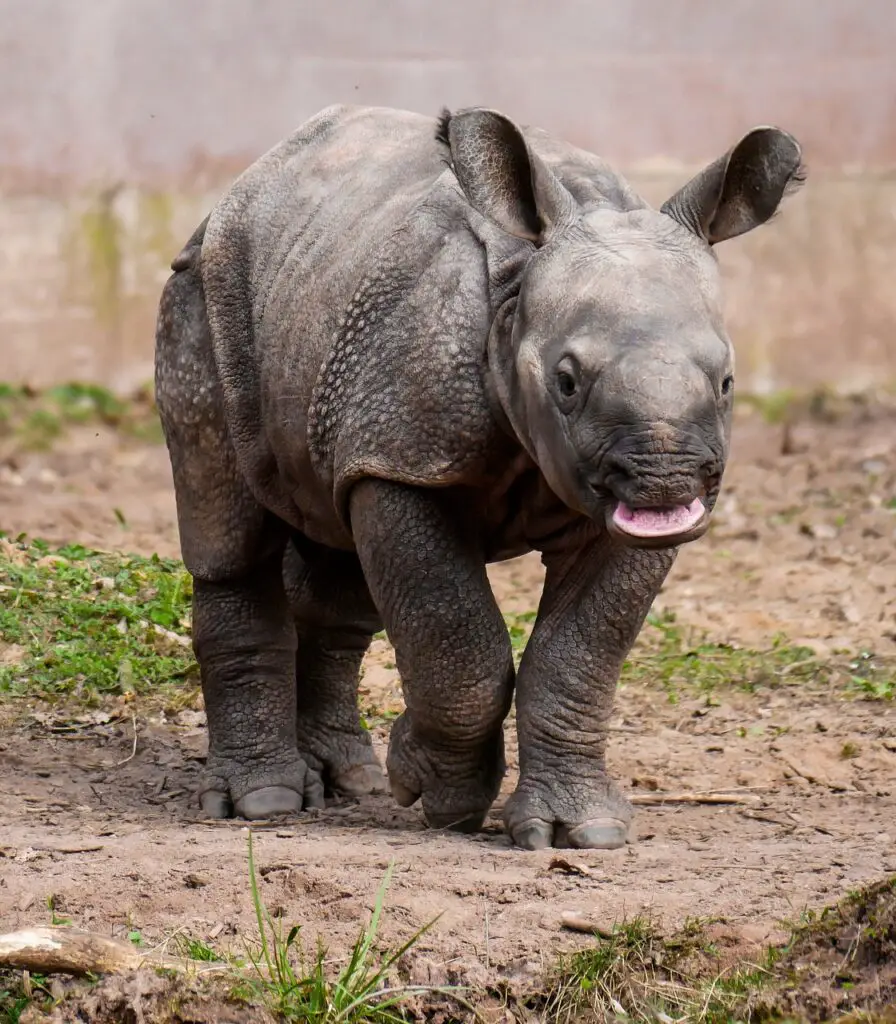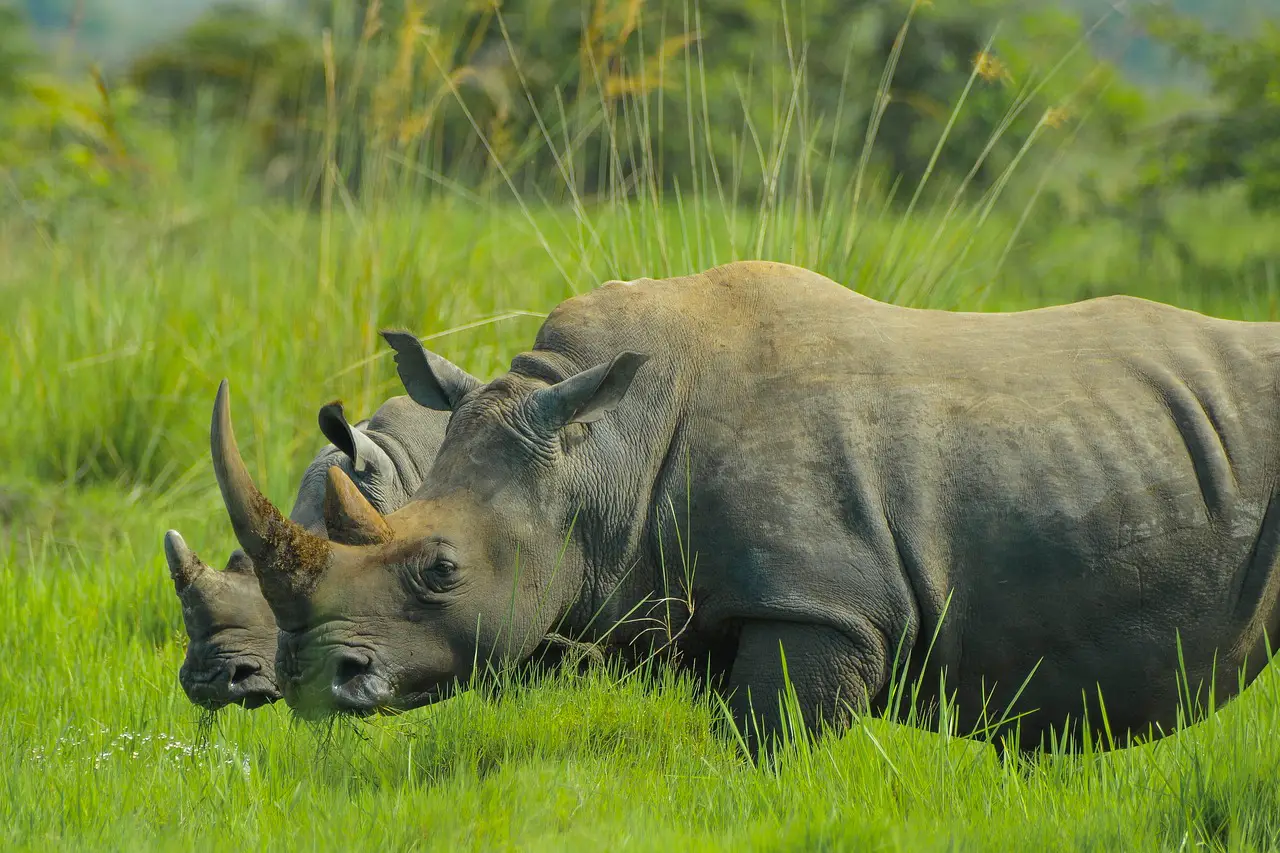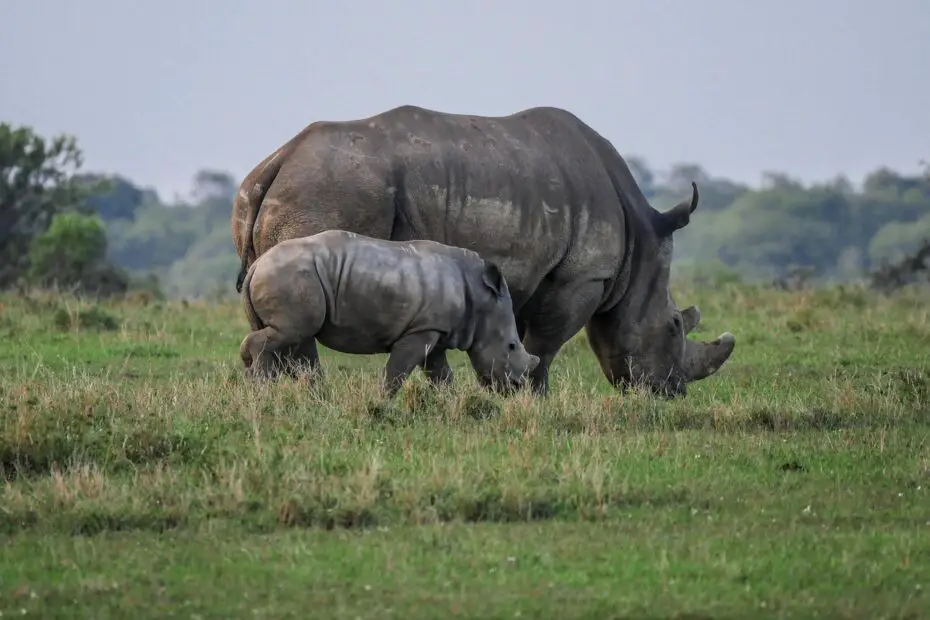Are you curious about the rhino diet? The diet of these magnificent creatures is a topic worth exploring. In this article, we will delve into the fascinating world of the rhino’s diet, shedding light on their herbivorous adaptations, nutritional needs, habitat impact, and conservation efforts. Get ready to discover the secrets of a mighty herbivore!
You may also want to read about the cheetah diet.
Introduction
Rhinos are powerful herbivores that roam the grasslands and forests of various regions. Their diet plays a crucial role in their survival and overall well-being. Understanding what they eat helps us comprehend their ecological niche and aids in formulating effective conservation strategies.
The Importance of Understanding Rhino Diet
Studying the diet of rhinos is vital for multiple reasons. Firstly, it provides insights into their evolutionary adaptations, allowing us to appreciate their remarkable ability to sustain themselves on plant-based diets alone. Secondly, understanding their dietary preferences helps us protect their habitats and ensure the availability of suitable food sources. Lastly, comprehending the rhino’s diet assists in mitigating human-wildlife conflicts, as conflicts often arise due to competition for resources.

Rhino Diet: Herbivorous Adaptations
Rhinos are well-equipped for a herbivorous lifestyle. Their teeth and jaws are specially designed to efficiently chew plant material. They possess large, flat molars, which aid in grinding tough vegetation. Additionally, their elongated lips and flexible tongues allow them to grasp and strip leaves and grasses effectively.
Rhino Diet: Grasses and Vegetation
Grasses form a significant portion of a rhino’s diet. They have an impressive ability to consume a vast variety of grass species, ranging from tall, coarse grasses to shorter, tender ones. Rhinos use their lips and prehensile lips to select and crop grasses with precision.
Rhino Diet: Fruits and Browse
In addition to grasses, rhinos also consume fruits and browse. Fruits provide them with essential vitamins and nutrients. As for browse, it refers to the tender shoots, twigs, and leaves of woody plants. Rhinos enjoy the occasional browse, particularly during the dry seasons when the availability of other food sources may be limited.
Rhino Diet: Nutritional Needs
Rhinos have specific nutritional requirements that must be met for their optimal health. They require a balanced intake of carbohydrates, proteins, and fats, as well as essential vitamins and minerals. A diverse diet helps them meet these requirements and ensures their well-being.

Rhino Diet: Water Requirements
Water is essential for rhinos, just like any other living organism. They rely on water sources such as rivers, lakes, and waterholes to quench their thirst. Rhinos are known to spend a considerable amount of time near water bodies, making it an integral part of their habitat.
Rhino Diet: Seasonal Variations
The rhino’s diet is not static but varies with the changing seasons. During the dry season, when the availability of fresh grasses decreases, rhinos may rely more on browse and fruits. Conversely, in the wet season, when grasses are abundant, they tend to consume a higher proportion of grasses.
Rhino Diet: Impact on Habitat and Ecosystem
The dietary preferences of rhinos have a significant impact on their habitat and the surrounding ecosystem. Their grazing and browsing behaviors shape the vegetation structure, creating diverse habitats that support a wide range of other species. Rhinos play a vital role in maintaining the balance of their ecosystems.
Rhino Diet: Threats and Conservation Efforts
Unfortunately, the rhino’s diet and their survival face various threats. Habitat loss, primarily due to human activities, poses a significant challenge. The conversion of natural habitats into agricultural land and urban areas diminishes the availability of suitable food sources for rhinos. Moreover, illegal poaching for their horns disrupts the delicate balance of ecosystems.
Rhino Diet: Human-Wildlife Conflict
As human populations expand, conflicts between humans and rhinos become more common. These conflicts often arise from competition for limited resources, including food. Understanding the dietary needs and patterns of rhinos can aid in implementing strategies to reduce human-wildlife conflicts and promote coexistence.
Rhino Diet: The Role of Poaching
Poaching remains a severe threat to rhinos across the globe. The demand for rhino horns drives illegal hunting, resulting in a significant decline in their population. By educating the public about the importance of rhinos and the impact of poaching on their diet and survival, we can contribute to the conservation of these magnificent creatures.
Rhino Diet: Promoting Awareness and Conservation
Creating awareness about the rhino’s diet and its significance is crucial for their conservation. It is imperative to educate communities, policymakers, and the general public about the importance of preserving the rhino’s natural habitats and protecting their food sources. Conservation efforts should focus on preserving grasslands, promoting sustainable agriculture practices, and combating illegal wildlife trade.
Conclusion
The diet of rhinos is an essential aspect of their lives, influencing their survival, habitat, and interactions with humans. By understanding and respecting their dietary needs, we can play a vital role in conserving these remarkable creatures for future generations. Let us celebrate the diversity of rhino diets and work together to ensure their continued existence.
FAQs
Q1. Can rhinos eat any type of grass?
Rhinos have a diverse diet and can consume various grass species, ranging from tall, coarse grasses to shorter, tender ones. However, their preferences may vary based on availability and other factors.
Q2. Do rhinos eat meat or insects?
No, rhinos are herbivores and do not eat meat or insects. Their diet consists primarily of grasses, fruits, and browse.
Q3. How much water do rhinos need in a day?
Rhinos require a significant amount of water to stay hydrated. On average, they can consume up to 50 liters of water per day.
Q4. What are the main threats to the rhino’s diet?
The main threats to the rhino’s diet include habitat loss, poaching for their horns, and human-wildlife conflicts arising from competition for resources.
Q5. How can I contribute to rhino conservation?
You can contribute to rhino conservation by supporting organizations that work towards protecting their habitats, raising awareness about their diet and the impact of poaching, and advocating for stricter regulations against illegal wildlife trade.
